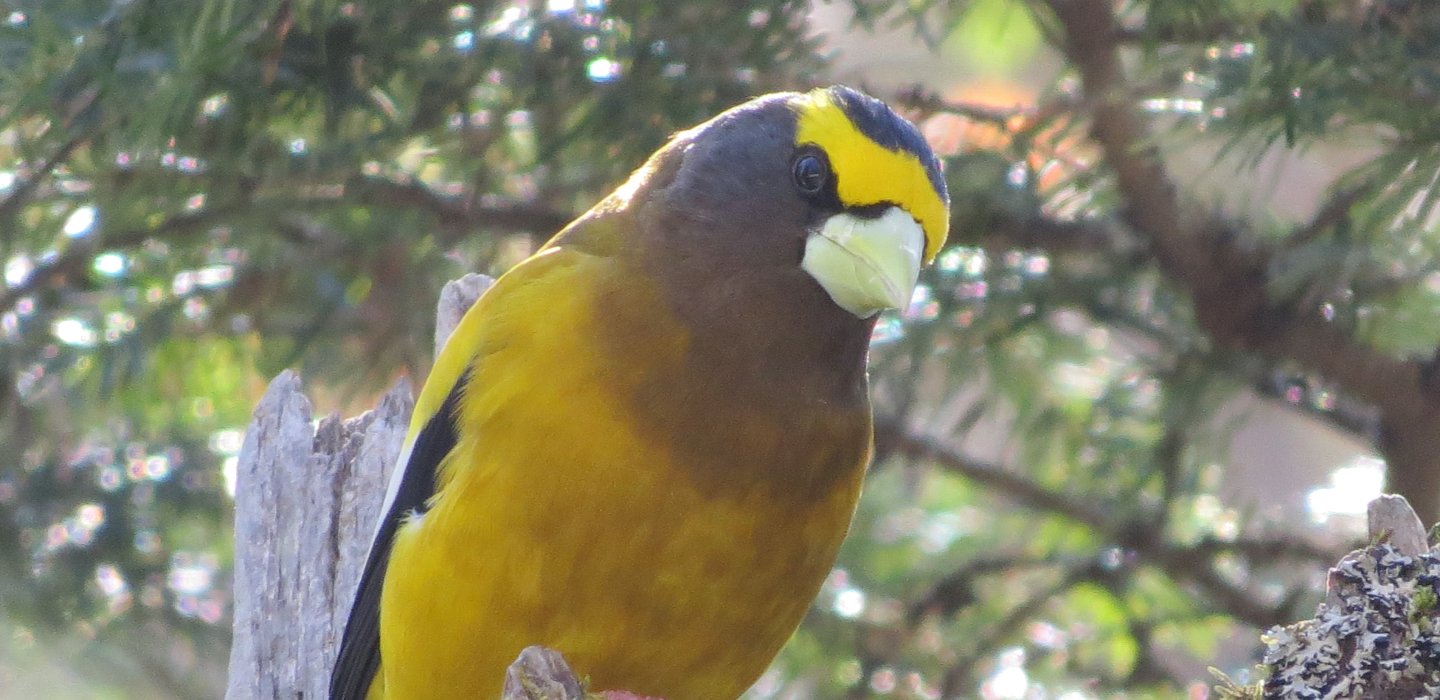
The Town of Santa Clara in Franklin County is filled with lakes, ponds, brooks, rivers, and some of the most remote wilderness areas in the Adirondacks. Blue Mountain Road, one of the few roads leading through this wilderness, spans more than 18 miles through the northern section of Santa Clara. With abundant boreal habitat, it is one of the most popular birding areas of the Adirondacks.
My friend David Buckley and I decided to take advantage of our snowless December to go birding and hiking along the southern end of Blue Mountain Road. The road runs north and south, and begins at the end of Keese Mills Road in Paul Smiths at its southern end and continues north until it ends at Route 458. Much of it is a dirt road.
.jpg)
Keese Mills Road
As we headed down Keese Mills Road from Route 30, I mentioned that this road used to be known as a great place to find Evening Grosbeaks. This species has steeply declined in northern New York over the past few years and it is becoming harder to find them. A few minutes later, we came to the end of Keese Mills Road at the Bay Pond gate where you make a right turn to continue on Blue Mountain Road. There is a large house by the gate and we spotted birds at their feeders. As I looked with binoculars, I viewed three beautiful male Evening Grosbeaks! That was a terrific way to start our birding trip!
.jpg)
Blue Mountain Road
As we began our drive up Blue Mountain Road, I marveled at the habitat we passed through. It has a far "northern" feel and seems different from other boreal areas of the Adirondacks.
.jpg)
At our next stop, I immediately heard a foraging woodpecker. It was a male Black-backed Woodpecker. Boreal Chickadees began to vocalize and a Gray Jay flew over to us. These three species are some of the most sought-after by visiting birders.
.jpg)
%20(1280x960).jpg)
.jpg)
Chilled by our long stop on this bitter cold day, we warmed up in the car as we continued driving north. At our next roadside stop, I once again heard a Black-backed Woodpecker. This time it was calling. The bird began to drum and several other Black-backed Woodpeckers answered and called back and forth! More Boreal Chickadees began to vocalize around us. We continued to find Boreal Chickadees at every one of our roadside stops and we tallied at least 12!
Purple Finches, Pine Siskins, and American Goldfinches were abundant everywhere we stopped.
.jpg)
Hiking trails
After traveling on Blue Mountain Road for approximately 5 and 3/4 miles we arrived at our hiking destination. The two trails that we planned to hike are across from each other. There is a dirt parking area on the left.
.jpg)
The short, half-mile trail on the left (western) side of the road leads to the St. Regis River. The mile long trail on the right (eastern) side of the road leads to the old railroad grade running through the Madawaska area. The railroad bed is privately owned and posted, so that is the turn-around point. Both trails have metal gates at the beginning and lead through lovely boreal habitat on level terrain.
As we pulled up to park, we ran into one of the Spruce Grouse researchers who was out monitoring the birds. Spruce Grouse, a species that is precipitously declining in the Adirondacks, can still be found in this area, and the researchers have been bringing in Spruce Grouse from Maine and Canada to try and help bolster the population.
After speaking with the researcher, we hiked to the St. Regis River.
.jpg)
.jpg)
.jpg)
I had hoped to find Red Crossbills by the river, and it was the first species we heard flying over us at the river's edge! Red Crossbills are nesting in several areas of the Adirondacks this winter. Both Red and White-winged Crossbills can nest at any time of year, but they most frequently nest during winter in the Adirondacks when the cone crops are good to excellent.
.jpg)
Also at the St Regis River, we found Moose tracks in the sand. More Red Crossbills were heard flying over the trail as we hiked back toward the car.
We crossed Blue Mountain Road to hike the trail toward Madawaska.
.jpg)
As we began the hike toward the railroad bed, we heard a Boreal Chickadee. After watching this bird we continued hiking and heard more Red Crossbills. Pine Siskins were abundant all along the trail. A Brown Creeper was observed along with Golden-crowned Kinglets. We found more Moose tracks in addition to Coyote, Snowshoe Hare, and Raccoon tracks. It seemed quite unusual to find a mushroom in December!
.jpg)
The dirt road trail is beautiful.
.jpg)
.jpg)
Continuing north on Blue Mountain Road
After the second hike, we continued driving north on Blue Mountain Road for a couple more miles. There are several more overgrown trails with Spruce Grouse signs that could be hiked. The Spruce Grouse signs are intended to inform hunters that these endangered birds are in the area, and the signs show how to tell the difference between a Ruffed and a Spruce Grouse.
.jpg)
We found three Ruffed Grouse along the road. The bridge over Quebec Brook was our turn-around point. There is another hiking trail that runs along the brook, but it was time for us to turn around. This location is about 7.5 miles from the southern end of Blue Mountain Road.
.jpg)
.jpg)
Heading south on Blue Mountain Road
I stopped a few times during our drive back and we continued to hear Boreal Chickadees at all the stops. David was thrilled by all the birds we found and he said we should come back as soon as possible!
Stay tuned for a future blog on birding the northern end of Blue Mountain Road!
There are unlimited birding and hiking opportunities in the region, along with great places to stay and eat for an enjoyable visit.
(Note: The middle section of Blue Mountain Road is a seasonal use road and not plowed in winter, so it is the only season when you can't drive the road end to end (except when there is no snow). The southern and northern ends of the road are plowed. In winter, the southern end of Blue Mountain Road can be accessed from Keese Mills Road and the northern end from Route 458.)

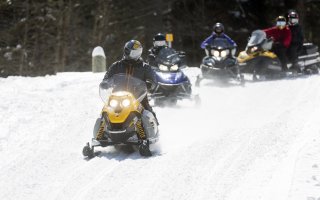
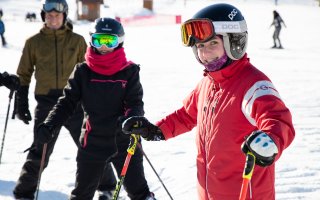
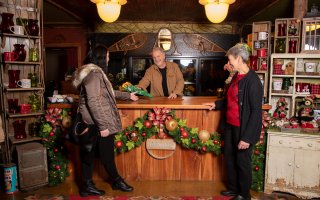

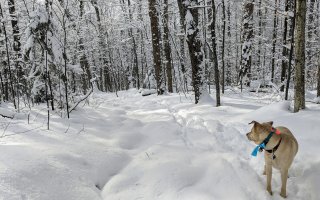
Comments
Add new comment